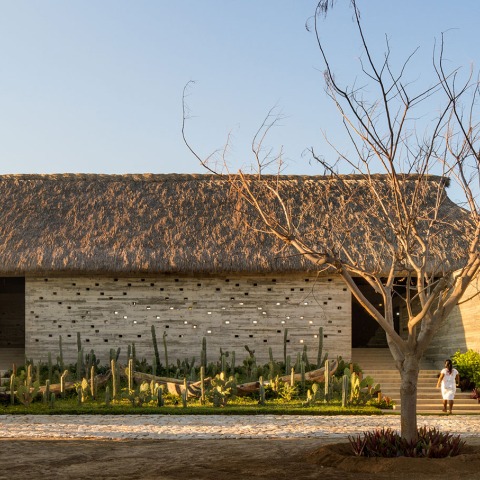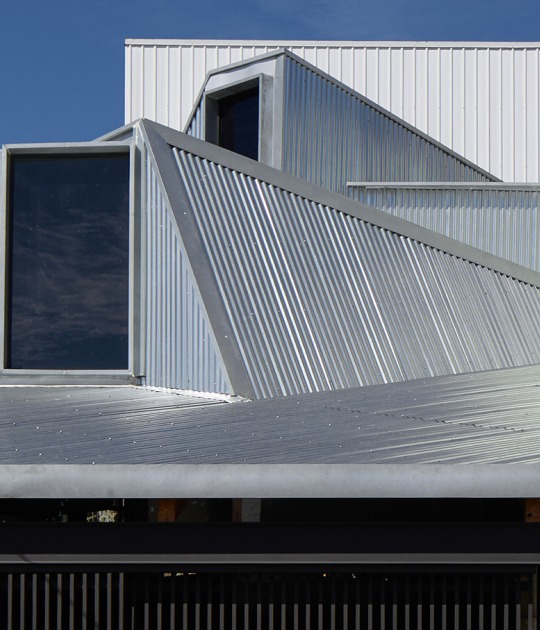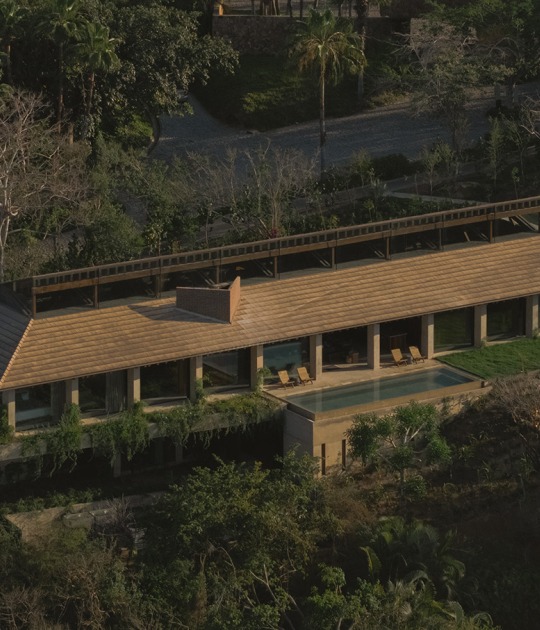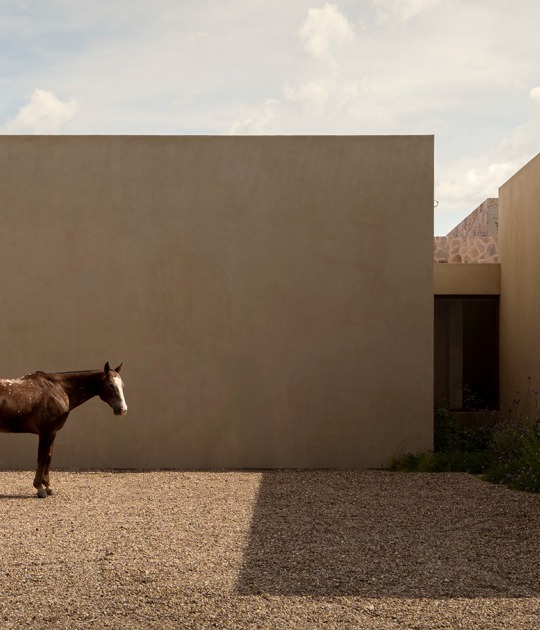The compositional and formal elements of the house seek to create a connection with the heights and layout of the archaeological site of Mitla in Oaxaca, a very important archaeological site that functioned as a center of political and religious power for the Zapotecs of the valley between 100 and 1521 AD.
Description of project by Anonimous
Located in Puerto Escondido, Mexico, Casa Cova is set on a 100 meter long by 35-meter wide portion of land between the Pacific Ocean and the Oaxacan mountain range that is only 70 meters from the coast. The project program was designed as a vacation home for two families, which implied the creation of two different compounds of private rooms that are connected through the common recreational areas.
The house consists of two main parts: a large central common area and two parallel arms located at the side of the lot containing the private suites. The large-scale central volume marks the access to the house, which has two main side entrances that pass through a lattice wall, helping to ventilate the common spaces and creating a dynamic light pattern from dusk to dawn. This central volume materializes into a high-ceilinged multi-purpose public space containing a lounge, dining area, and bar. The volume is topped by a 30-meter long 'palapa', a regional covering technique made of dried palm leaves, which cools tropical temperatures to around 23°C by providing shade and space for heat to escape through the top of the structure.
A system of parallel concrete walls encloses the two arms that house the house's private rooms. Each of these arms houses three pavilions. Each master suite has its own framed view of the Pacific horizon. The pavilions are connected by a series of interlocking open courtyards that create the main views and entry points to the rooms, as well as achieve cross-ventilation so that indoor temperatures can be reduced. All private rooms and the main central volume share the view and access, right in the center, to a pool designed as a set of alternating planes, containing shaded recreational areas facing the ocean.
The house was designed to work with its natural context, using locally sourced dried palm fronds for walls and ceilings, "parota" wood for carpentry, and a green respite from the low-maintenance regional vegetation chosen for landscaping to help achieve low-cost maintenance and dignify the building's aging process. The reliable use of concrete in the structure and finishes also responds to local needs; the constant intensity of the sun and the salinity of the site demand a material that ages finely without the need for much maintenance.
The use of organic materials and concrete also stems from the fact that the house was built using regional craft techniques, as well as being used for interior decorations and local art displayed in the project.
The building is also strategically elevated 5 feet off the ground, to avoid flooding from the known "swell" that generally affects this area of Puerto Escondido's coastline.
The main rooms, interlocking floor plans, and high ceilings of "Casa Cova" seek to remind us of the alternating heights of the massive chambers of the archaeological ruins of Mitla, juxtaposed with the smaller private passages commonly found in pre-colonial regional architecture.


















































